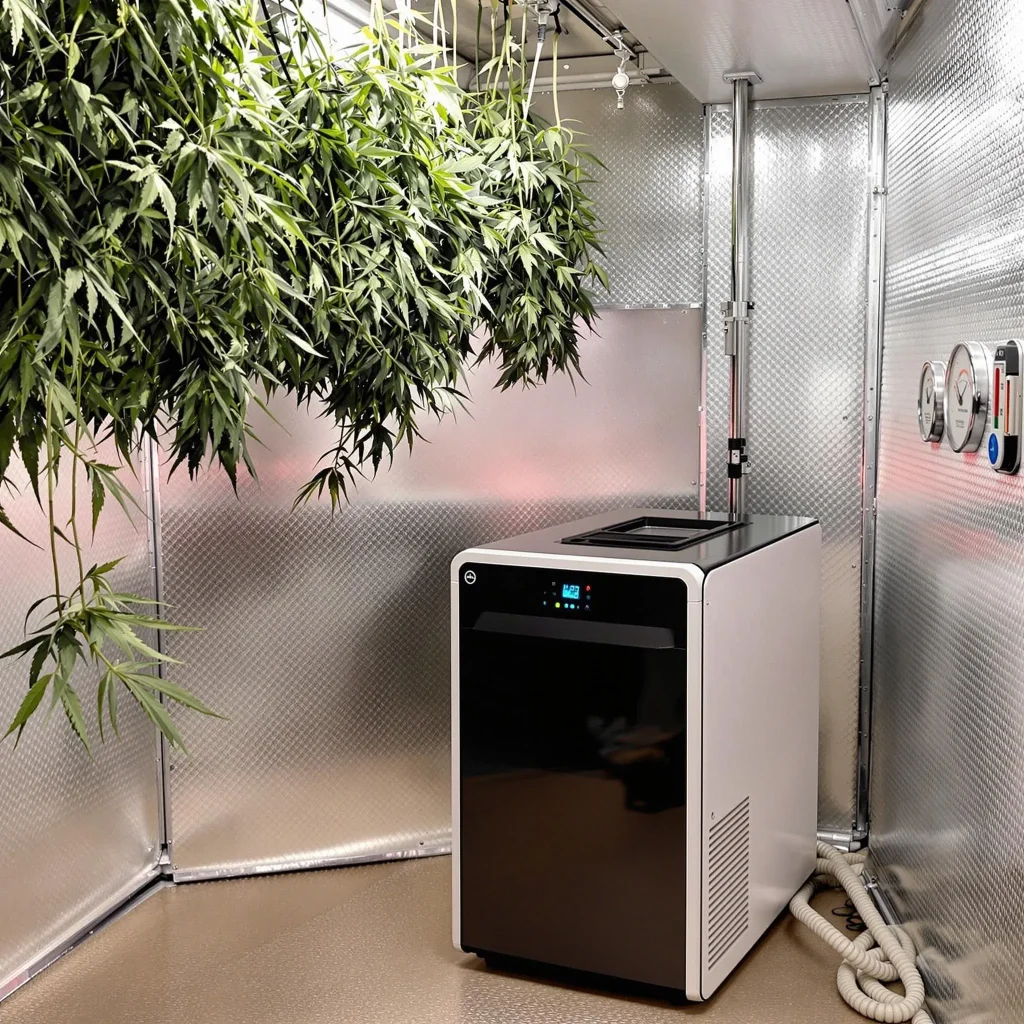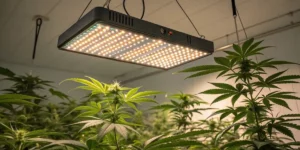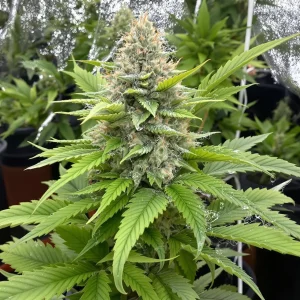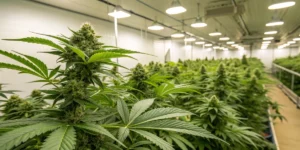Why is Humidity Control Important for Drying Cannabis?
The Impact of Humidity on Drying Cannabis
Humidity plays an important function in the drying process, directly impacting the quality of your cannabis. When drying cannabis, controlling the moisture levels in the air ensures the buds cure evenly and retain their potency. Without proper humidity control, the drying process can stall, leading to subpar results.
Too much humidity during drying allows mold and mildew to thrive. These contaminants can ruin your harvest and render it unusable. On the other hand, low humidity levels can dry out your buds too quickly, stripping them of terpenes and cannabinoids. A dehumidifier for drying cannabis helps maintain the ideal balance, creating the perfect environment for your buds to cure.
Ideal Humidity Levels for Drying Cannabis
The sweet spot for drying cannabis is a relative humidity (RH) of 55% to 60%. This range allows the moisture within the buds to evaporate slowly, preserving essential compounds like terpenes and cannabinoids. Achieving this balance ensures your feminized cannabis retains its potency, aroma, and flavor.
A dehumidifier for drying cannabis helps you stay within this range, especially in areas with high ambient humidity. By setting your dehumidifier to maintain the ideal RH, you create a consistent drying environment that leads to top-tier results.
Consequences of Poor Humidity Management
Failing to control humidity can lead to disastrous outcomes. High humidity creates a breeding ground for mold, while low humidity causes buds to dry too quickly. Both scenarios compromise the quality of your cannabis, resulting in harsh smoke and diminished effects.
Using a dehumidifier for drying cannabis eliminates these risks by providing precise control over your drying space. With consistent humidity levels, your buds cure perfectly, ensuring they are flavorful, potent, and free from contaminants.
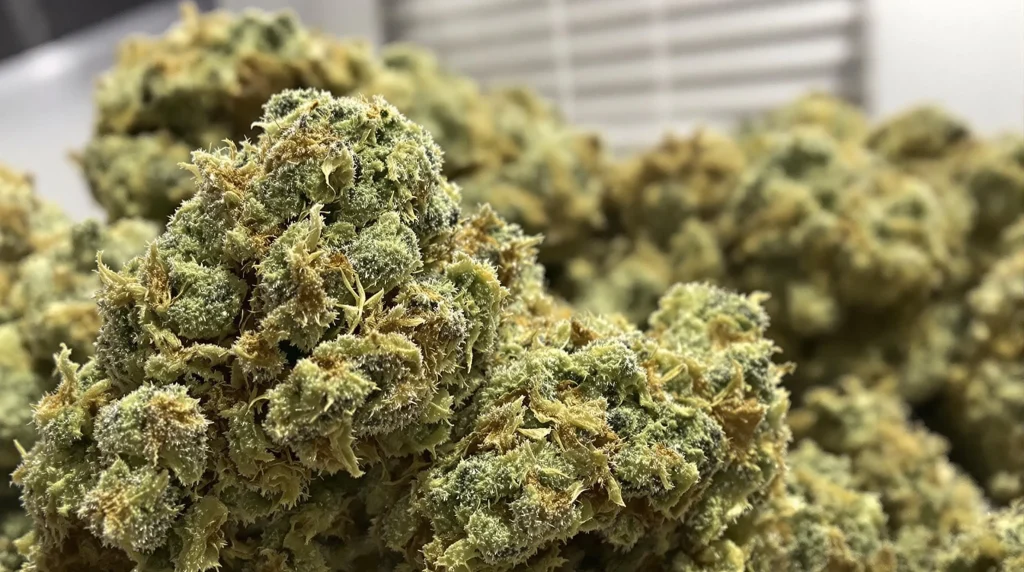
How a Dehumidifier Enhances the Drying Process
Maintaining Optimal Humidity Levels
A dehumidifier for drying cannabis is your best tool for maintaining consistent humidity. By removing excess moisture from the air, it ensures your drying environment stays within the ideal RH range. This consistency prevents sudden fluctuations that could stress your buds or disrupt the drying process.
When you maintain optimal humidity, your cannabis dries evenly, preserving its potency and flavor. Whether you’re drying a small personal harvest or a larger batch, a dehumidifier helps you achieve consistent results every time.
Preventing Mold and Mildew During Drying
Mold and mildew are the enemies of a successful cannabis harvest. These fungi thrive in high-humidity environments, often going unnoticed until it’s too late. A dehumidifier for drying cannabis actively removes the moisture mold needs to grow, protecting your buds from contamination.
By incorporating a dehumidifier into your setup, you reduce the risk of mold and mildew, safeguarding your hard work. This step is especially crucial in humid climates, where ambient conditions can make drying cannabis a challenge.
Improving the Quality and Flavor of Your Cannabis
The drying process directly impacts the final quality of your cannabis. By using a dehumidifier for drying cannabis, you preserve the terpenes and cannabinoids that give your buds their unique flavor and potency. Slow, controlled drying enhances these compounds, resulting in a smoother and more enjoyable smoke.
Growers who prioritize flavor and aroma know the importance of humidity control. A dehumidifier allows you to fine-tune your environment, ensuring your cannabis dries to perfection without losing its essential qualities.
Choosing the Right Dehumidifier for Drying Cannabis
Features to Look For in a Dehumidifier
When selecting a dehumidifier for drying cannabis, certain features can make a significant difference in your drying process. Look for models with adjustable humidity settings, as this allows you to maintain precise control over your drying environment. A built-in hygrometer is also valuable, providing real-time humidity readings to ensure consistent levels.
Additionally, consider dehumidifiers with auto-shutoff or continuous drainage options. These features reduce the need for constant monitoring, allowing you to focus on other aspects of your grow. The right dehumidifier simplifies the drying process while ensuring top-quality results.
Room Size and Dehumidifier Capacity
The size of your drying space determines the capacity of the dehumidifier you need. Smaller rooms may only require a compact unit, while larger setups benefit from a high-capacity model capable of handling greater volumes of air.
Calculate the square footage of your drying area and compare it to the dehumidifier’s specifications. Choosing the right size ensures the unit can effectively maintain humidity levels without overworking, prolonging its lifespan and improving efficiency.
Energy Efficiency and Noise Levels
Energy efficiency is an important consideration, especially for those drying large quantities of cannabis. A dehumidifier for drying cannabis that operates efficiently saves on electricity costs while still delivering reliable performance.
Noise levels are another factor to keep in mind. Quieter models are ideal for home setups where noise may be a concern. Many modern dehumidifiers strike a balance between power and quiet operation, making them suitable for cannabis drying.

Setting Up a Dehumidifier in Your Drying Space
Placement Tips for Maximum Effectiveness
Proper placement of your dehumidifier is key to achieving even humidity control. Position the unit in the center of your drying space or near the area where humidity tends to accumulate. Ensure there is adequate airflow around the dehumidifier to allow it to function optimally.
Avoid placing the unit too close to your cannabis to prevent uneven drying or over-drying. Instead, create a balanced setup where air circulates evenly throughout the room, ensuring consistent results.
Adjusting the Dehumidifier Settings for Cannabis Drying
Set your dehumidifier to maintain a relative humidity of 55% to 60%. Most dehumidifiers come with adjustable settings, allowing you to fine-tune the levels to suit your needs.
Monitor the humidity regularly using a separate hygrometer to ensure the dehumidifier is working correctly. Small adjustments to the settings may be necessary depending on the ambient conditions in your drying space.
Monitoring Humidity Levels with Hygrometers
A hygrometer is an essential tool for anyone using a dehumidifier for drying cannabis. These devices provide accurate humidity readings, allowing you to verify the dehumidifier is maintaining the desired levels.
Place multiple hygrometers around your drying space to monitor conditions in different areas. This ensures even drying and helps you identify any inconsistencies that need addressing. With consistent monitoring, you can make adjustments quickly, protecting your harvest.
Tips for Using a Dehumidifier While Drying Cannabis
Balancing Airflow and Humidity Control
While a dehumidifier for drying cannabis is excellent for controlling humidity, proper airflow is equally important. Fans can help circulate air, ensuring even drying across all buds. However, avoid pointing fans directly at the cannabis to prevent over-drying or uneven results.
Position your dehumidifier to complement the airflow pattern in your drying space. This balance between airflow and humidity control prevents stagnant air pockets and ensures the buds cure consistently.
Avoiding Over-Drying Your Cannabis
Over-drying is a common concern when using a dehumidifier for drying cannabis. To prevent this, monitor your buds closely as they dry. If the humidity drops below 50%, adjust the settings or turn off the dehumidifier temporarily to maintain the ideal range.
Buds that dry too quickly lose essential terpenes and cannabinoids, resulting in a harsh, less flavorful product. By carefully managing humidity and checking your cannabis regularly, you ensure optimal results.
How to Maintain Your Dehumidifier for Consistent Performance
Regular maintenance keeps your dehumidifier running smoothly. Clean the unit’s filter frequently to prevent dust buildup, which can reduce efficiency. Empty the water reservoir as needed, or use a continuous drainage system for convenience.
Inspect your dehumidifier periodically to ensure all components are functioning correctly. A well-maintained dehumidifier for drying cannabis provides reliable performance, allowing you to focus on perfecting your harvest.
Benefits of Using a Dehumidifier for Drying Cannabis
Faster, More Even Drying Results
A dehumidifier speeds up the drying process by removing excess moisture from the air. This prevents uneven drying, where some buds cure properly while others retain excess moisture. Consistent results ensure a high-quality product every time.
Preserving Terpenes and Cannabinoids
Controlled drying is key to preserving the terpenes and cannabinoids that make cannabis unique. A dehumidifier for drying cannabis provides the steady environment needed to retain these compounds, resulting in a more potent and flavorful final product.
Achieving Consistent Quality in Your Harvest
Whether you’re drying a personal stash or preparing for commercial distribution, consistent quality is essential. A dehumidifier ensures each bud dries under optimal conditions, enhancing the overall appeal of your harvest.
FAQs About Dehumidifiers for Drying Cannabis
Do I Need a Dehumidifier for Drying Cannabis?
A dehumidifier is essential for growers in humid climates or those with limited control over their drying environment. It helps maintain the precise humidity levels needed for slow, even drying. If your drying space consistently exceeds 60% RH, a dehumidifier for drying cannabis is a worthwhile investment.
What Humidity Levels Should I Maintain?
The ideal humidity for drying cannabis is between 55% and 60%. This range allows the buds to cure slowly, preserving their potency, flavor, and aroma. A dehumidifier makes it easy to maintain this range, even in fluctuating ambient conditions.
Can a Dehumidifier Damage My Cannabis?
A dehumidifier won’t damage your cannabis if used correctly. However, improper use, such as setting the humidity too low, can lead to over-drying. Monitor your settings and adjust as needed to ensure your buds retain their quality.

